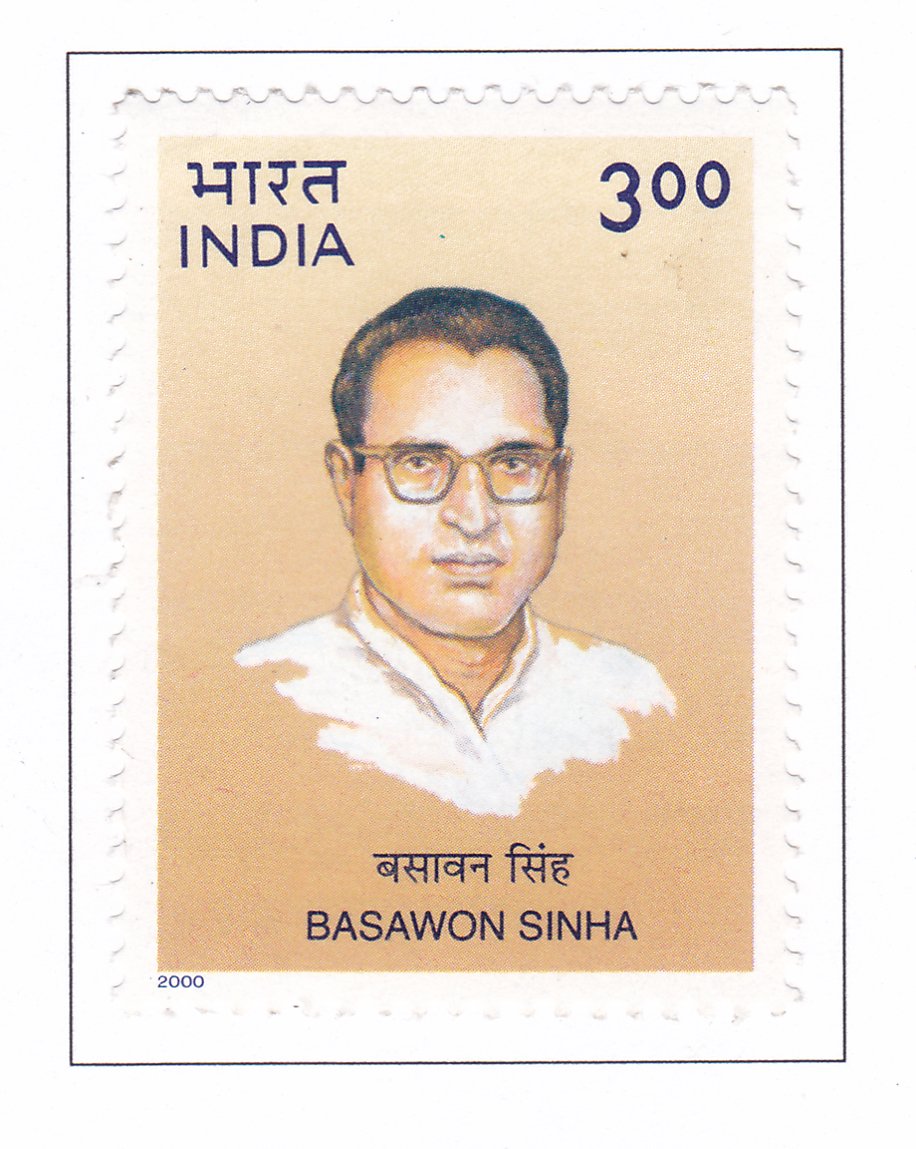Basawon Sinha (1909-1989)

Technical Data
| Date of Issue | March 23, 2000 |
|---|---|
| Denomination | Rs. 3 |
| Quantity | 400,000 |
| Perforation | comb 13 x 13½ |
| Printer | Calcutta Security Printers Ltd |
| Watermark | No Watermark |
| Colors | Multicolor |
| Catalog Codes |
Michel IN 1749 Stamp Number IN 1810 Yvert et Tellier IN 1515 Stanley Gibbons IN 1912 |
| Themes | Famous people | Men | Optical Instruments | Politicians |
Table of Contents
Commemorative Stamp: Basawon Sinha
Design Elements:
Stamp Design:
- Central Image: The stamp features a dignified portrait of Basawon Sinha, capturing his dedication and contributions to India’s freedom struggle and post-independence development.
- Additional Imagery: Visual elements may include symbols of the labor movement, trade unions, or revolutionary emblems that reflect his multifaceted role in Indian politics and social reform.
- Text: The stamp includes Basawon Sinha’s name, dates of birth and death (1909-1989), and a tribute to his role in the freedom struggle and his post-independence contributions.
First Day Cover (FDC) Design:
- Illustration: The FDC might depict scenes from Sinha’s significant activities, such as his involvement in revolutionary activities, trade union organization, and political leadership.
- Cancellation Mark: The cancellation mark could feature symbols related to his work in trade unions, labor rights, or his role in the Socialist Party and Janata Party.
Cultural and Historical Significance:
Early Life and Revolutionary Activities:
- Revolutionary Roots: Influenced by revolutionary organizations like the Hindustan Socialist Republican Army, Basawon Sinha was deeply involved in the freedom movement and participated in major revolutionary operations.
- Imprisonment: He spent over 16 years in prison for his revolutionary activities, including high-profile cases like the Lahore conspiracy case and others.
Post-Independence Contributions:
- Trade Union Movement: After joining the Congress Socialist Party in 1936, he played a crucial role in organizing workers in various industries across Bihar and founded the Hind Mazdoor Sabha.
- Political Leadership: Sinha was an active leader during the Quit India Movement, operating from underground and mobilizing support. In Independent India, he was a prominent leader of the Socialist Party and Janata Party, and held important positions including Leader of the Opposition and Minister for Labour, Planning, and Industry.
Legacy:
- Impact on Labor Rights: His efforts in organizing trade unions and advocating for labor rights had a lasting impact on the working class in India.
- Political Influence: Sinha’s contributions to the Socialist Party and his role in shaping post-independence politics are recognized as significant aspects of his legacy.
Usage:
- Educational Purpose: The stamp commemorates Basawon Sinha’s contributions to the freedom struggle, labor rights, and political development, providing educational insight into his legacy.
- Philatelic Collections: This stamp is a valuable addition for collectors, honoring a key figure in Indian political history and social reform.
Example of the Stamp Design:
- Stamp Image: The design prominently features Basawon Sinha’s portrait, with elements representing his revolutionary work, trade union activities, and political leadership.
Significance:
- The commemorative stamp pays tribute to Basawon Sinha’s enduring contributions to India’s freedom struggle and his post-independence efforts in labor rights and political reform, honoring his role as a significant leader and advocate for social justice.
